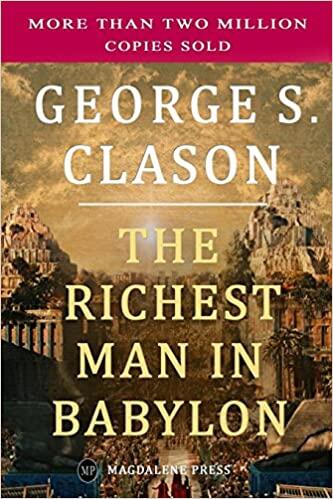The Richest Man in Babylon
Review The Richest Man in Babylon
by GEORGE S. CLASON
Description
Now in a hardcover edition, The Richest Man in Babylon is one of the most revolutionary financial books ever written. Its exposition of financial tips and secrets is adequate to give lessons on how to handle finances and pave the way to a prosperous life. Much of what is presented involves ways of acquiring wealth, financial suggestions, advice, applicable and life-binding parables, helpful financial instruments and tools, and viable solutions enough for one to have an easier path to riches and wealth.
Not so many complexities are presented since this was written to administer an easy “back-to-basics” type of learning about the fastest way to becoming wealthy. A narrative of simplicity exudes as it tries to present financial methods incorporated with life lessons, all with the intention of bridging theoretically-based financial solutions to practical application. Through the story-telling approach, concepts are easily understood while enabling readers to apply theories into practice.
The Richest Man in Babylon is far from the technicalities of finance; more of an inspirational one that speaks instead of imposing. All of which may be attributed to how it was composed and curated with great respect to language and time-enduring principles.
About the Author
George Samuel Clason, also known as George S. Clason, spent his 82 years as a war veteran, businessman, and writer. He served the United States as an army during the Spanish-American War. During his lifetime, he managed to establish two companies named Clason Map Company of Denver, Colorado, and the Clason Publishing Company. The former company initially published a road atlas of the United States and Canada. However, the company was only good until the Great Depression happened.
Clason came into popularity for writing educational pamphlets on ways to save and how to achieve financial prosperity. He started this kind of endeavor back in 1926 through the utilization of parables using the Babylonian context. Financial institutions and firms started distributing the handouts, and some of his critically acclaimed writings were curated into a book, which is presently known as the “Richest Man in Babylon.” He died at the age of 82 on April 7, 1957.
Table of Contents
Introduction
Foreword
- Chapter 1- The Man Who Desired Gold
- Chapter 2- The Richest Man in Babylon
- Chapter 3- Seven Cures for a Lean Purse
- Chapter 4- Meet the Goddess of Good Luck
- Chapter 5- The Five laws of Gold
- Chapter 6- The Gold Lender of Babylon
- Chapter 7- the Walls of Babylon
- Chapter 8- the Camel Trader of Babylon
- Chapter 9- The Clay Tablets from Babylon
- Chapter 10- The Luckiest Man in Babylon
- Chapter 11- A Historical Sketch of Babylon
